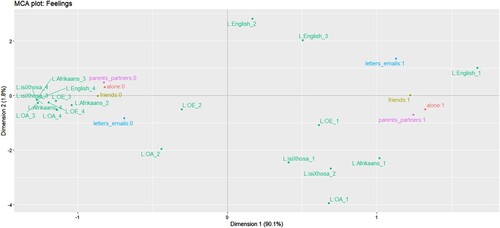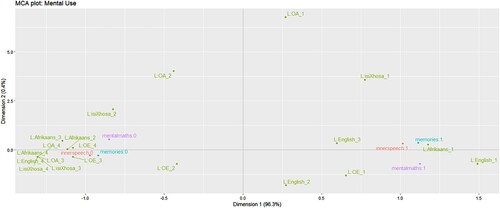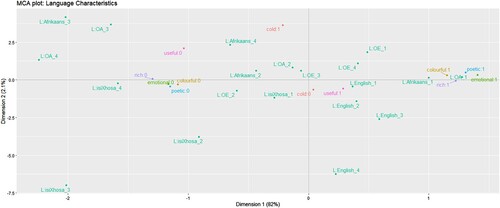Figures & data
Table 1. Order of Acquisition by Language Groups.
Figure 1. Language Use Patterns for Feelings. Language point labels are in green and follow the format of L:LanguageName_OrderofAcquistion, such that ‘L:isiXhosa_1’ is the point for L1 isiXhosa. In the language point labels, ‘OE’ and ‘OA’ denote ‘Other European’ and ‘Other African’, respectively. Each language use situation appears on the plot as two points: one reflecting use (e.g. ‘letters_emails:1’) and one reflecting non-use (e.g. ‘letters_emails_0’).

Figure 2. Language Use Patterns for Anger.

Figure 3. Language Use Patterns for Mental Use.

Figure 4. Perceptions of Language Characteristics.

